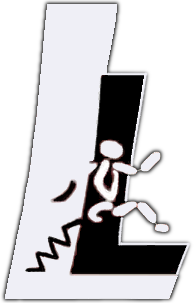Session 4: Application of bioinspired actuators in robots and assistive devices
Dirk Lefeber, Vrije Universiteit Brussel
Bio: Dirk Lefeber is a professor in Mechanical Engineering and head of the Robotics and Multibody Mechanics research group at VUB and brubotics.eu. He specializes in new actuators with adaptable compliance, dynamically balanced robots, robot assistants, rehabilitation robotics and multibody dynamics. He has been involved in several EU and national projects, including most recently exo4work for the development of exoskeletons for manufacturing industry, and CyberlegsPlusPlus for the development of active knee-ankle prostheses.
Title: Compliant actuation principles for rehabilitation and assistive robots
Abstract: Rehabilitation and assistive robots require new approaches for the many drawbacks that come along with conventional electrical actuators, such as high-reflected inertia, high stiffness, low force-to-weight ratio, impact, energy consumption, safety. These new robotic applications can strongly benefit from adaptable compliant actuator technology. Instead of introducing compliance at the control level, this approach is based on the use of inherent adaptable compliance on a purely mechanical level. In this way intrinsic compliant behavior is obtained at all time regardless of the control bandwidth, leading to increased system safety. The added mechanical complexity is easily countered with a range of potential benefits, such as energy efficiency, reduction of power requirements and intrinsic safety. The potential use of adaptable compliant actuators in applications such as prosthetics, rehabilitation and assistive robotics is discussed in view of control strategy, power reduction and energy efficiency. Special focus is put on new combinations of series and parallel arrangements of the elastic elements.
Pierre Cherelle, Vrije Universiteit Brussel
 Bio: Pierre Cherelle was born in Braine l'Alleud (Belgium) in 1984. He received the master of science degree in experimental physics from Vrije Universiteit Brussel in 2007. Currently, he's researcher and teaching assistant at the Vrije Universiteit Brussel. His research is in the field of rehabilitation robotics. Within the Robotics & Multibody Mechanics Research Group, he is working on the design, construction and control of passive and powered transtibial prosthetic devices.
Bio: Pierre Cherelle was born in Braine l'Alleud (Belgium) in 1984. He received the master of science degree in experimental physics from Vrije Universiteit Brussel in 2007. Currently, he's researcher and teaching assistant at the Vrije Universiteit Brussel. His research is in the field of rehabilitation robotics. Within the Robotics & Multibody Mechanics Research Group, he is working on the design, construction and control of passive and powered transtibial prosthetic devices.
Title: Implementation of explosive compliant actuation in the AMPfoot prosthesis
Stefano Toxiri, Istituto Italiano di Tecnologia (IIT)
Bio: Stefano Toxiri holds a BSc in Biomedical Engineering (Univ. Cagliari, IT) and a MSc in Robotics (ETH Zurich, CH). Since September 2014 he has been with the Italian Institute of Technology (IIT) and earned a PhD degree in February 2018. His research aims at the development and validation of wearable assistive exoskeletons and is grounded on studying how the human body performs the target physical tasks. His doctoral research contributed to the Robo-Mate EU project in the development of a back-support exoskeleton to protect factory workers from lumbar spine injuries, with focus on two areas: modulating the device in real time to provide meaningful physical assistance, and exploiting elastic elements to minimize the need for active actuation.
Title: Resolving redundancies in human motor control at kinematic, motor, and neural level - biomechanical concepts and applications
 Abstract: Actuators are among the defining components of wearable robots. As greater forces and dynamic performance are required, actuators become increasingly heavy, bulky and expensive. It is therefore crucial to design the actuators so as to achieve a close fit to the requirements of the target application. Elastic components as part of an actuator may help make good use of actuation resources and energy storage-release capabilities.
This contribution presents the case of a back-support exoskeleton that supports the task of lifting objects. The design rationale for choosing a unidirectional parallel-elastic actuator is based on the biomechanics of the lifting task, which implies large static loads.
Compared to a traditional non-elastic actuator, a PEA matches more closely the specific actuation requirements, allowing a more convenient choice for the motor. This is supported by results from an
Abstract: Actuators are among the defining components of wearable robots. As greater forces and dynamic performance are required, actuators become increasingly heavy, bulky and expensive. It is therefore crucial to design the actuators so as to achieve a close fit to the requirements of the target application. Elastic components as part of an actuator may help make good use of actuation resources and energy storage-release capabilities.
This contribution presents the case of a back-support exoskeleton that supports the task of lifting objects. The design rationale for choosing a unidirectional parallel-elastic actuator is based on the biomechanics of the lifting task, which implies large static loads.
Compared to a traditional non-elastic actuator, a PEA matches more closely the specific actuation requirements, allowing a more convenient choice for the motor. This is supported by results from an
experimental comparison, which shows substantially improved torque dynamics.






